- About MAA
- Membership
- MAA Publications
- Periodicals
- Blogs
- MAA Book Series
- MAA Press (an imprint of the AMS)
- MAA Notes
- MAA Reviews
- Mathematical Communication
- Information for Libraries
- Author Resources
- Advertise with MAA
- Meetings
- Competitions
- Programs
- Communities
- MAA Sections
- SIGMAA
- MAA Connect
- Students
- MAA Awards
- Awards Booklets
- Writing Awards
- Teaching Awards
- Service Awards
- Research Awards
- Lecture Awards
- Putnam Competition Individual and Team Winners
- D. E. Shaw Group AMC 8 Awards & Certificates
- Maryam Mirzakhani AMC 10 A Awards & Certificates
- Two Sigma AMC 10 B Awards & Certificates
- Jane Street AMC 12 A Awards & Certificates
- Akamai AMC 12 B Awards & Certificates
- High School Teachers
- News
You are here
Mathematical Treasures - Maria Agnesi's Analytical Institutions
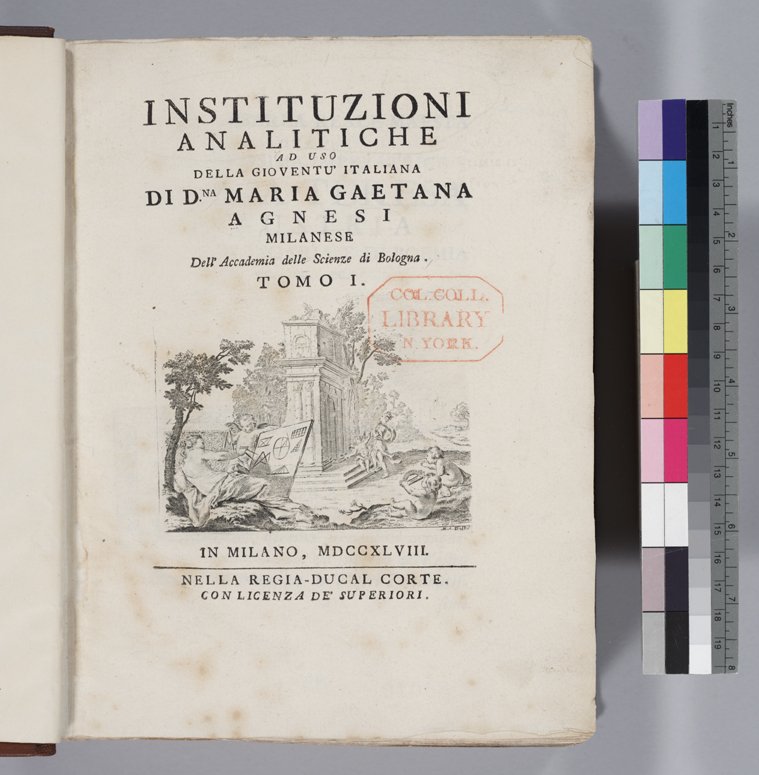
Here is the title page of the original Italian version of the Instituzioni analitche ad uso della gioventu italiana (Foundations of Analysis for the Use of Italian Youth) of Maria Agnesi (1718-1799). The text was one of the earliest treatments of calculus written on the European continent. Because Agnesi originally wrote this to instruct her younger brothers in analysis, she explained concepts very clearly and gave numerous examples. (For more on Agnesi, see C Truesdell, Maria Gaetana Agnesi, Archive for History of Exact Science 40 (1989), 113-142, C Truesdell, Correction and Additions for Maria Gaetana Agnesi, Archive for History of Exact Science 43 (1991), 385-386, M Mazzotti, The World of Maria Gaetana Agnesi, Mathematician of God (Baltimore, 2007), and A. Cupillari, A Biography Of Maria Gaetana Agnesi, An Eighteenth-Century Woman Mathematician: With Translations.)

Among Agnesi's examples was a description of a curve which she called la Versiera. We give here (pp. 380-381) her geometric description of the curve and her derivation of its analytic formula. The figure is given below.
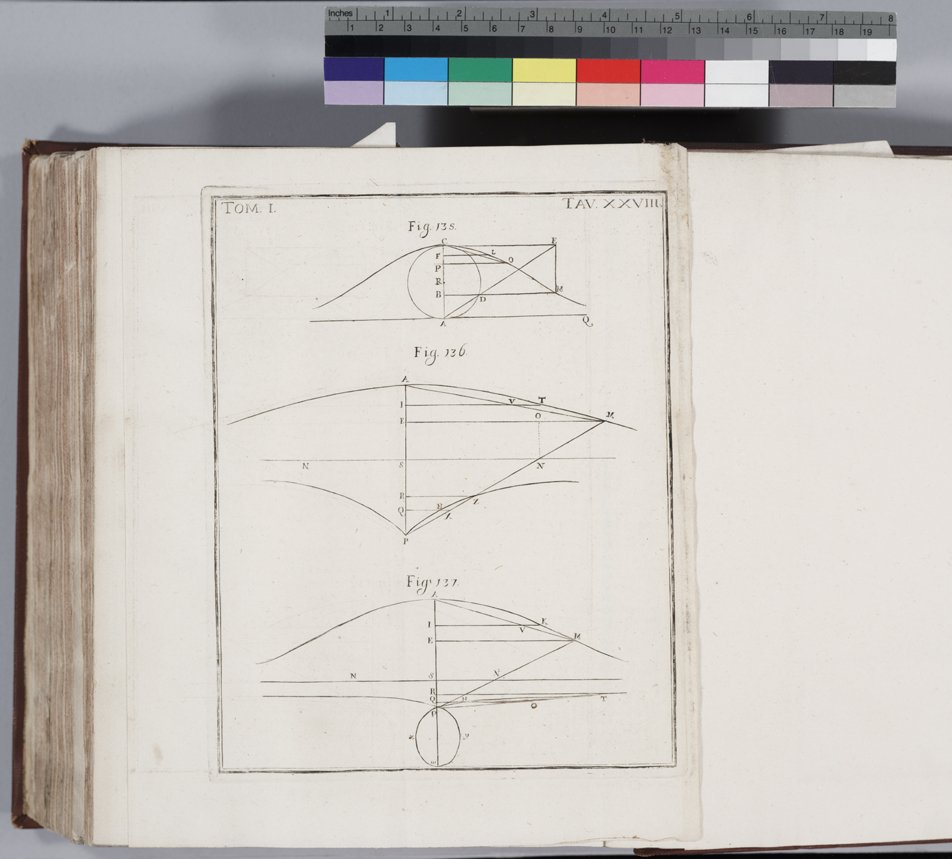
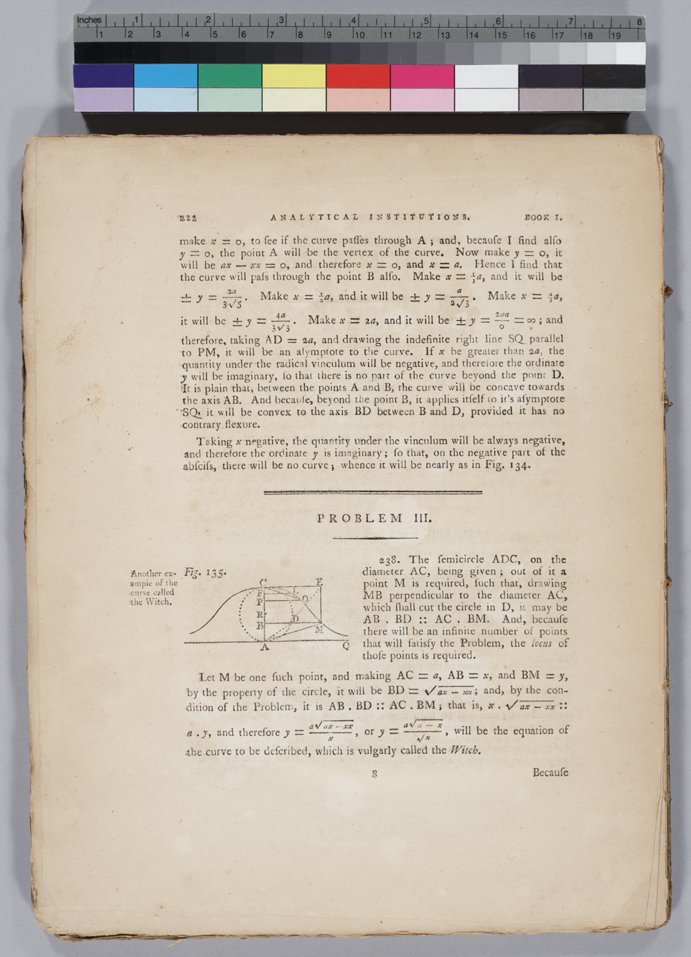
In the 1801 English translation of Agnesi's book by John Colson, the translator translated her name for the curve as "Witch", because the Italian word versiera, which actually is derived from the Latin meaning "to turn", could be considered an abbreviation for avversiera, meaning "wife of the devil." Unfortunately, this term has stuck, and the curve is usually referred to in English as the "witch of Agnesi." It is, in fact, the item in her book for which Agnesi is most famous. Here is page 222 of the English edition and below is the continuation on p. 223 in Colson's words.

There was, naturally, much more in the Analytical Institutions, including what some regard as the best treatment of calculus written in the first half of the eighteenth century. The following three pages deal with some procedures of integration.
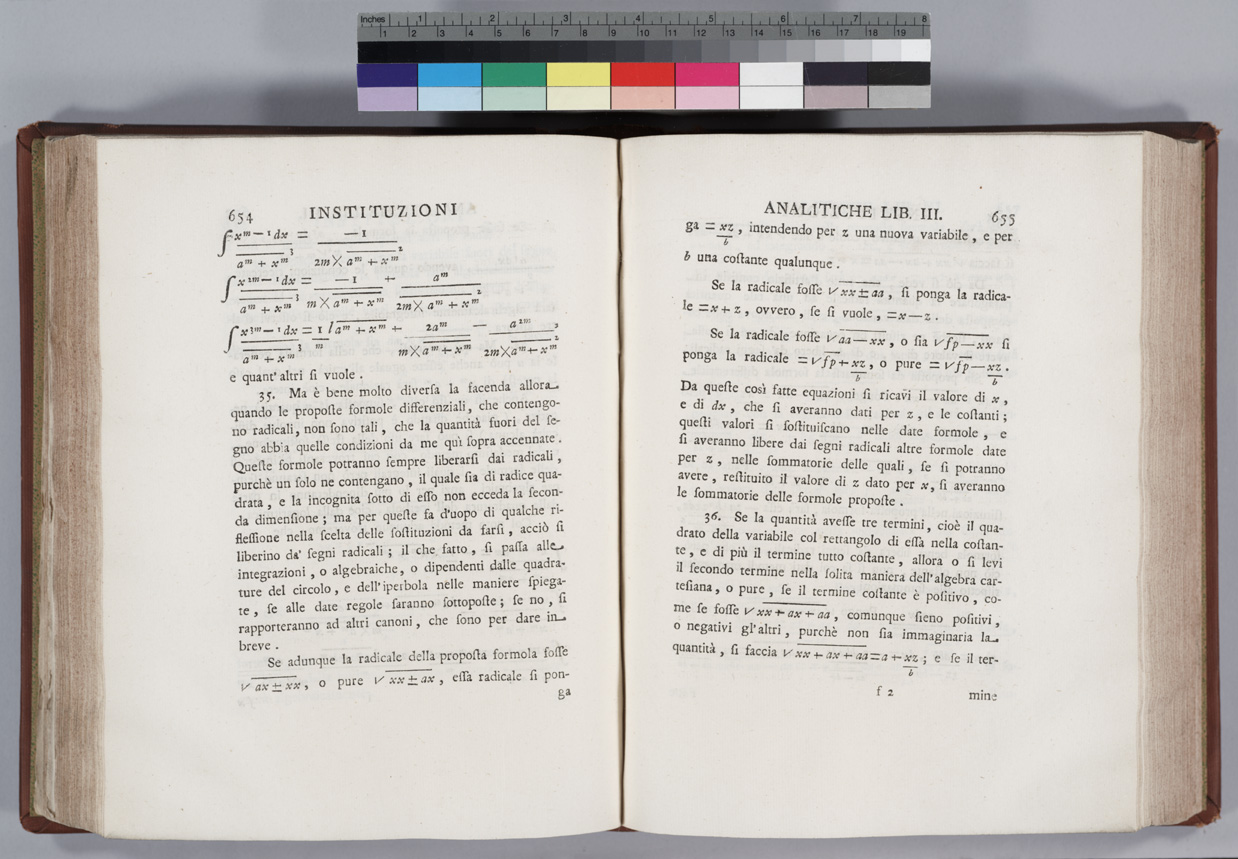
On page 656, Agnesi shows how to use algebraic substitution to deal with integrals of square roots of quadratic expressions in x. This is different from our modern method of trigonometric substitution.
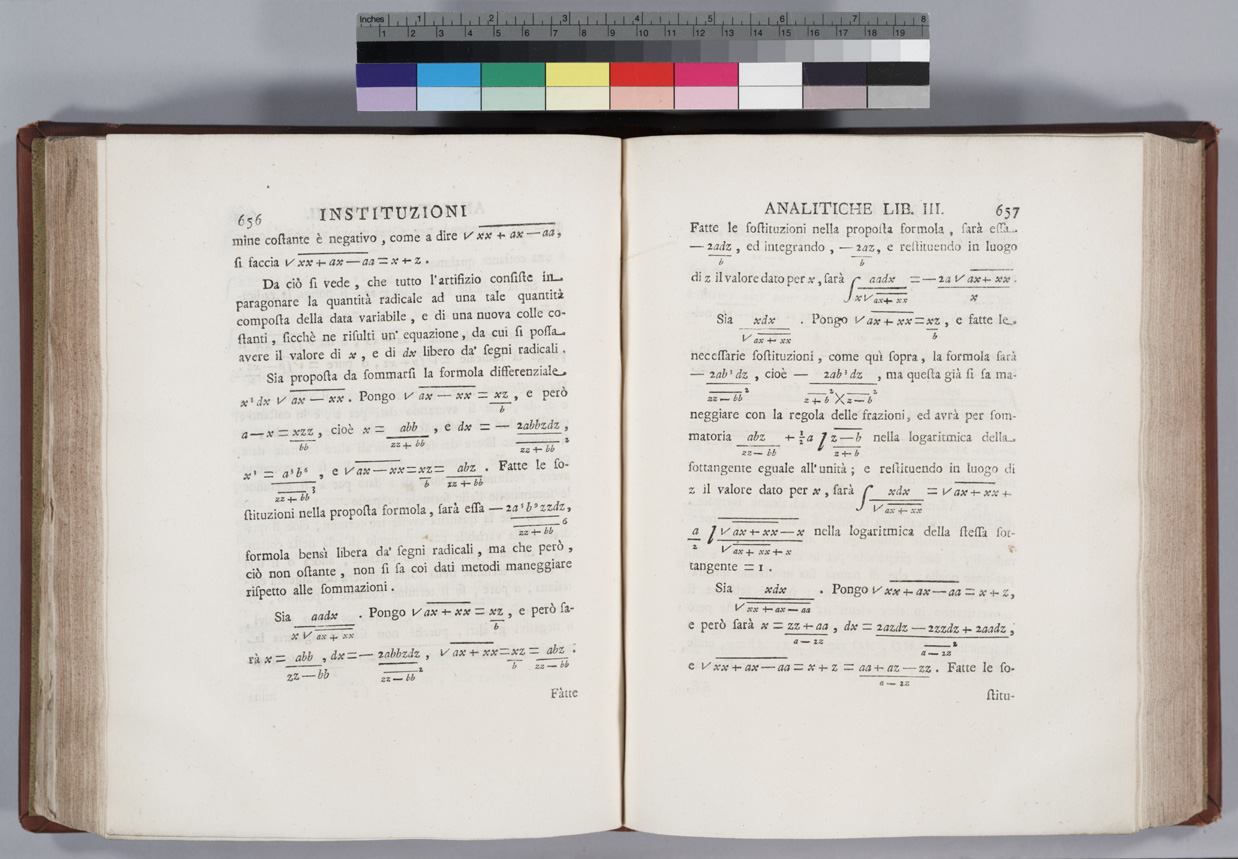
On pages 656-657, Agnesi continues to find substitutions in more complicated situations.
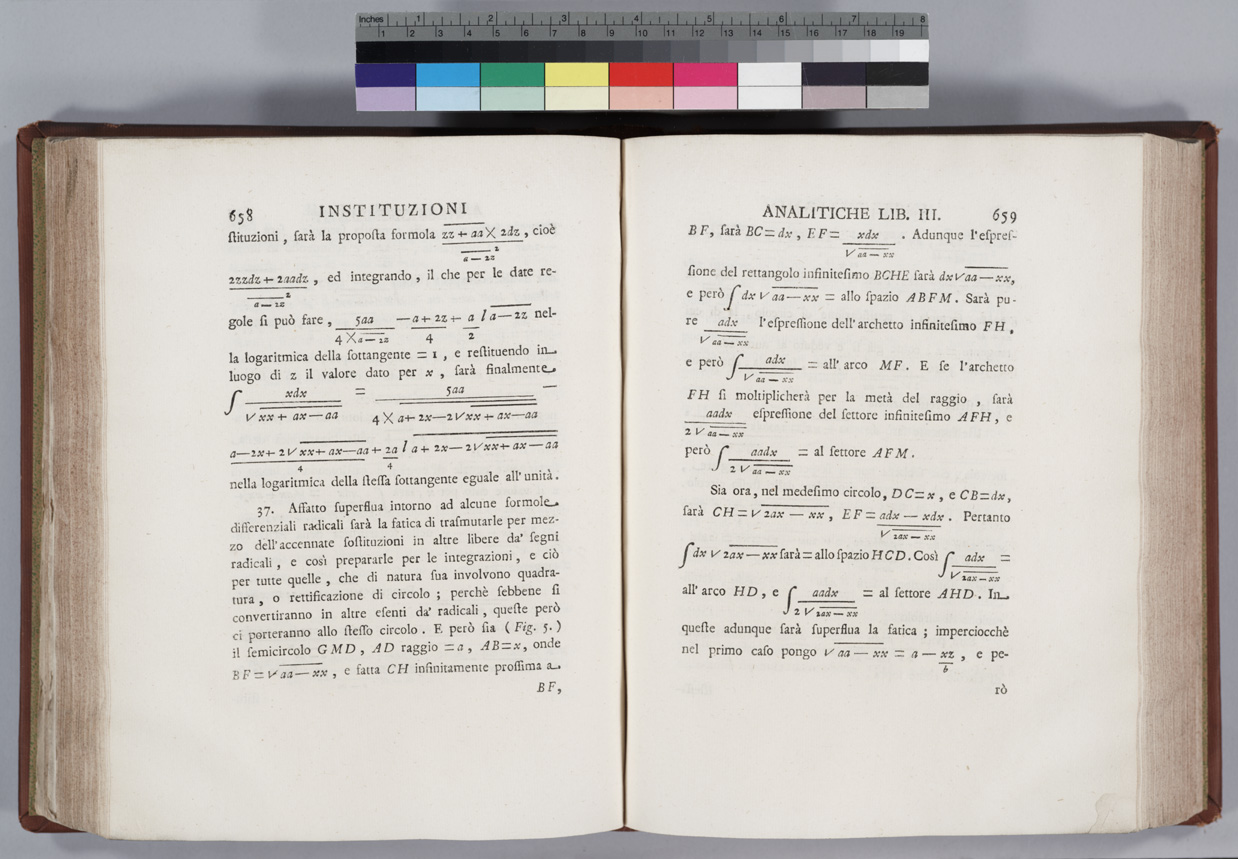
Finally, on pages 658-659, Agnesi completes this discussion and gets some complicated integrals involving logarithms. It is an interesting exercise to compare her methods with modern methods of integration.
Frank J. Swetz and Victor J. Katz, "Mathematical Treasures - Maria Agnesi's Analytical Institutions," Convergence (January 2011)




